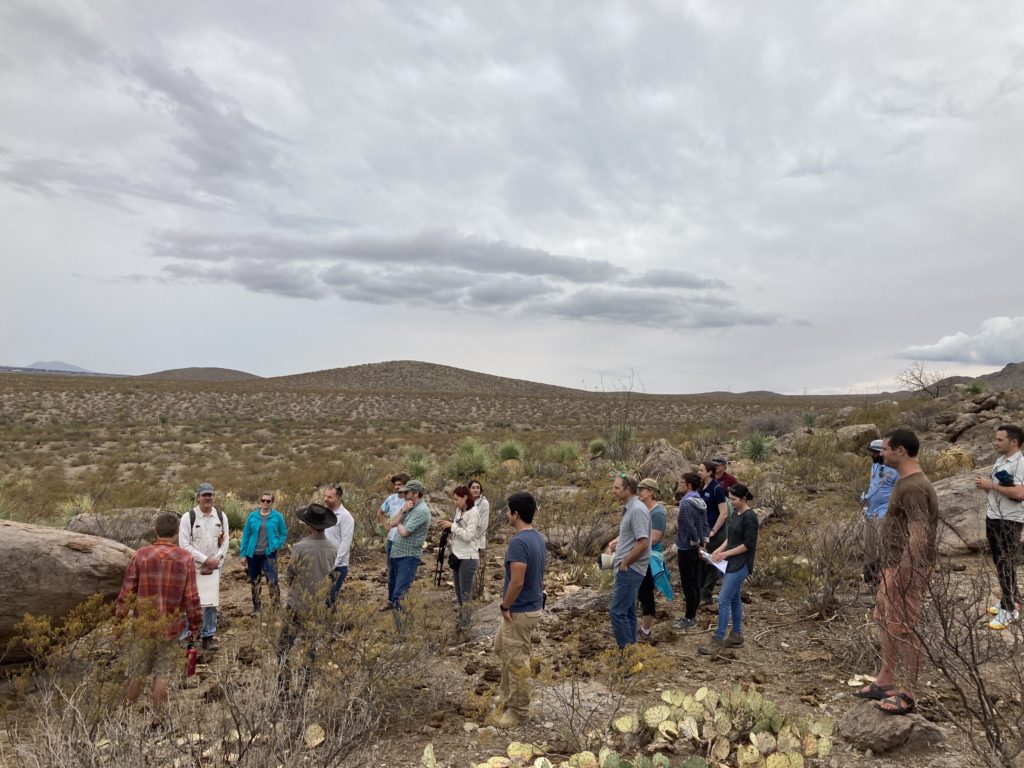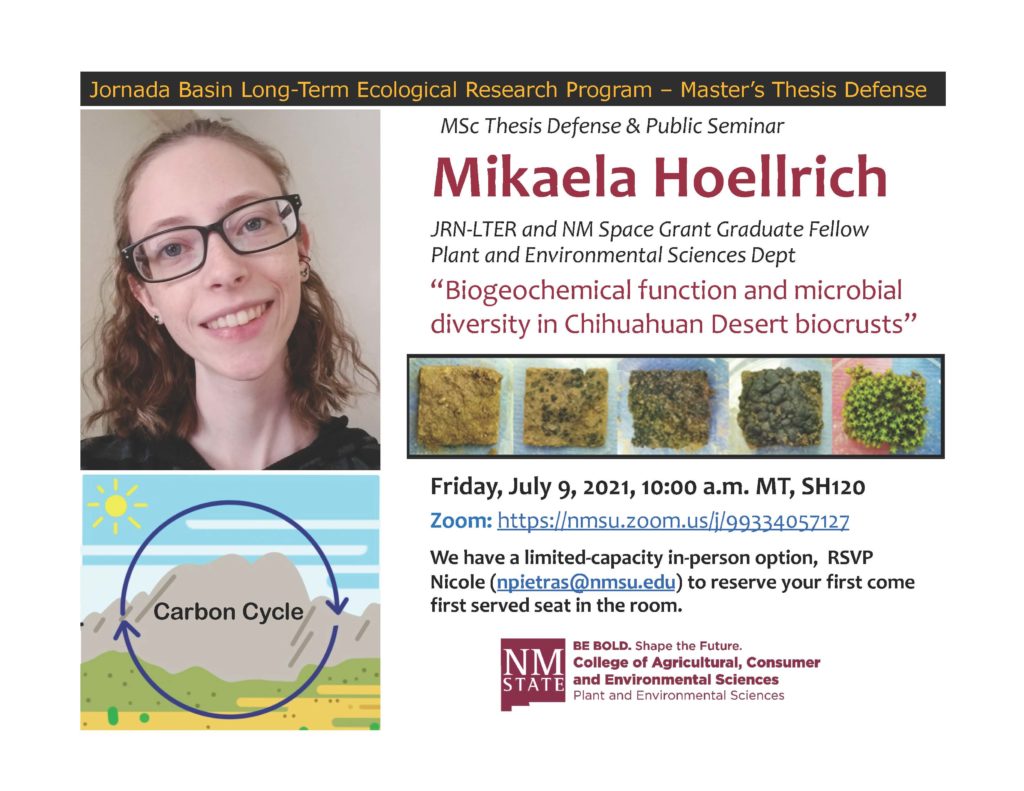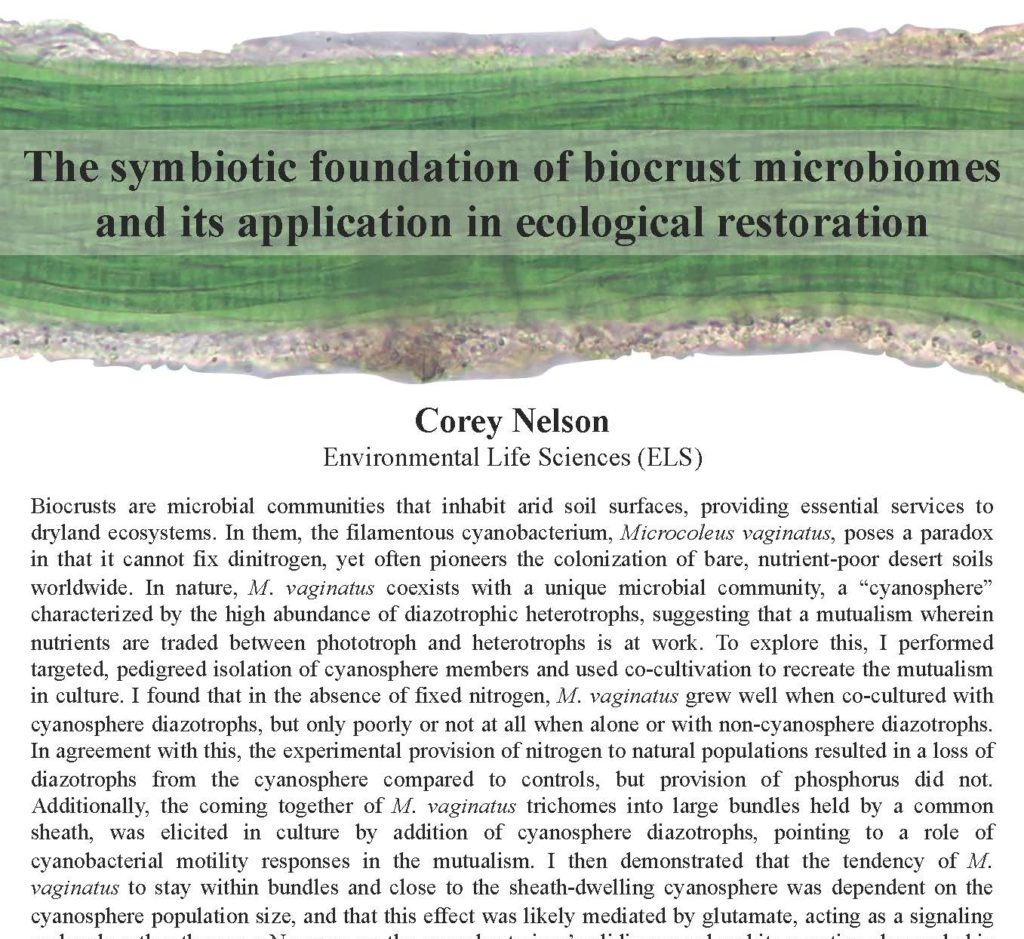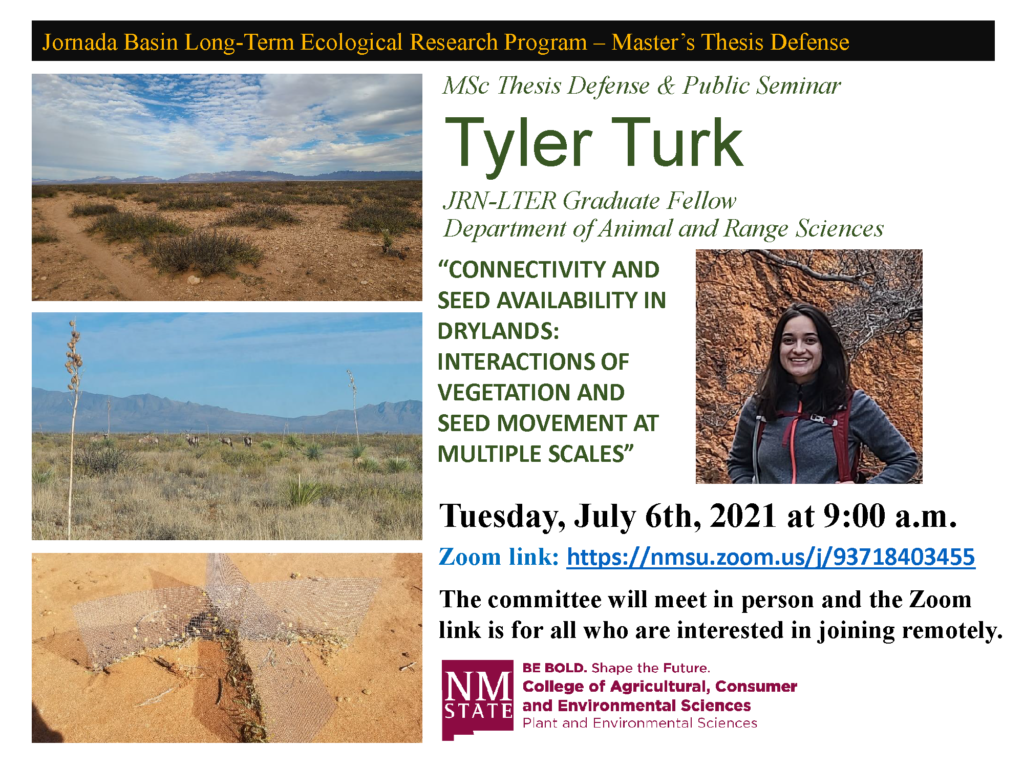Desert Ecology Short-Course 2021
This year’s Jornada LTER Desert Ecology Short-Course took place as a hybrid (virtual and in-person) event from June 28-30, 2021 and was well-attended by graduate students and Jornada researchers. This year’s short-course included many exciting and informative sessions such as student presentations, investigator talks, field visits, data management workshops, and a data jam. Topics included […]
Desert Ecology Short-Course 2021 Read More »



